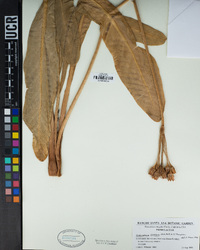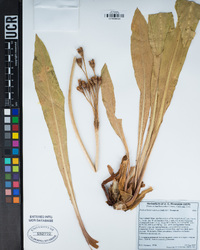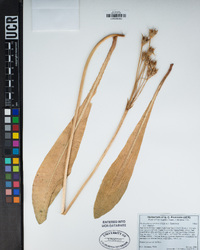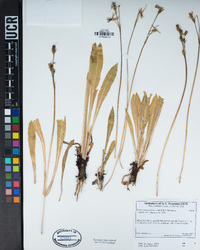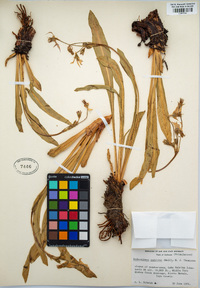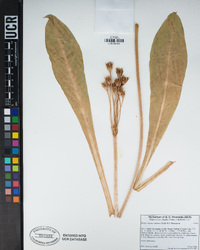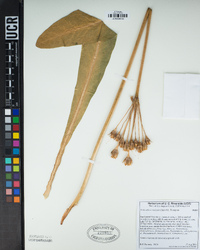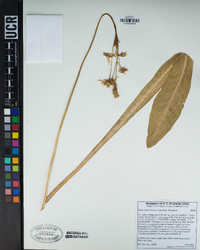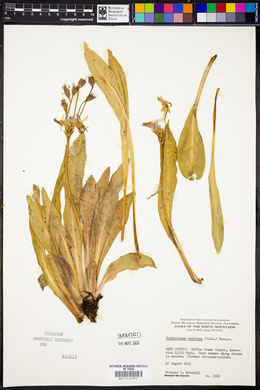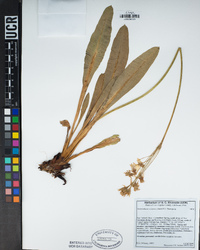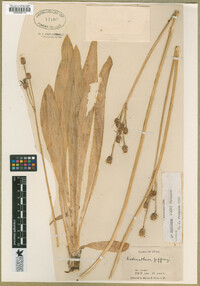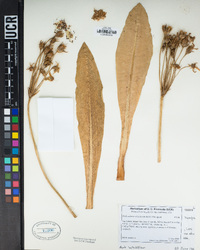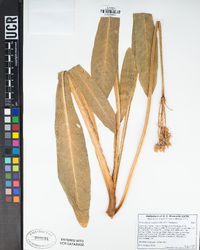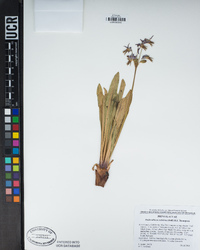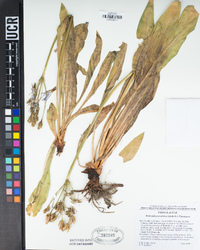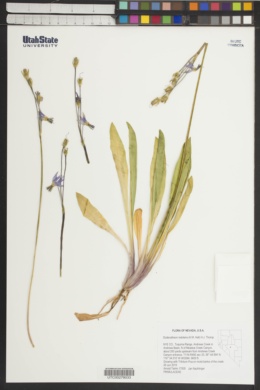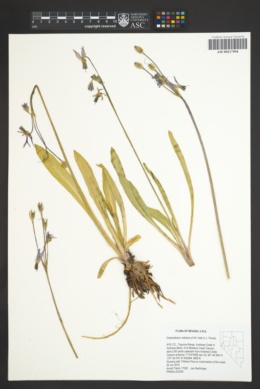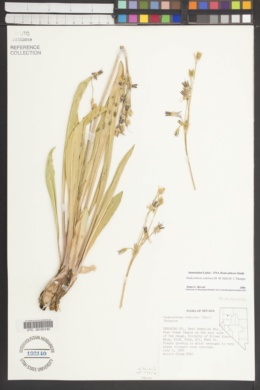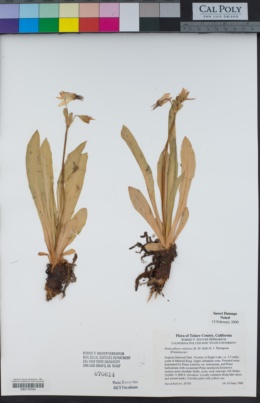Dodecatheon redolens
|
|
|
|
Family: Primulaceae
|
Plants 25-80 cm; scape usually glandular-pubescent through-out, often sticky. Caudices not obvious at anthesis or horizontal, short, thick; roots tan to dark reddish brown; bulblets absent. Leaves 20-50(-60) × 2.5-6 cm; petiole usually winged; blade oblanceolate, base decurrent onto stem, gradually tapering to petiole, margins entire, surfaces minutely glandular-pubescent. Inflorescences 5-15-flowered; bracts lanceolate to broadly lanceolate, 5-17 mm, glandular-pubescent. Pedicels 2-9 cm, glandular-pubescent. Flowers: calyx light green, 10-18 mm, glandular-pubescent, tube 3-10 mm, lobes 5, 5-12 mm; corolla tube yellow with maroon, thick, often wavy ring, ring rarely absent, lobes 5, magenta to lavender, 14-30(-35) mm; filaments distinct, dark maroon to black, 0.2-0.8 mm (usually concealed by corolla tube); anthers 7-11 mm, (apex acute); pollen sacs maroon, connective dark maroon to dark purple, transversely rugose; stigma enlarged, diam. usually 2+ times style. Capsules light brown, often reddish brown apically, valvate, ovoid, 8-17 × 5-9 mm, glandular-puberulent or glabrous except for glandular-puberulent teeth; walls thin, pliable. Seeds with thin membrane along edges. Flowering late spring-summer. Moist meadows, stream banks, mainly in montane conifer woodlands; 2300-3600 m; Calif., Nev., Utah. Dodecatheon redolens occurs mainly in the high mountains of the southern Sierra Nevada, with scattered populations in the San Bernardino, San Gabriel, and San Jacinto mountains of southern California. Elsewhere in California, it occurs on scattered desert ranges in the northern Mojave Desert. In the Intermountain West, it is found occasionally in Inyo and Mono counties on the eastern foothills of the Sierra Nevada, the White Mountains, and on or near Glass Mountain. It is found across central Nevada to the Independence and Ruby mountains of Elko County, and the Deep Creek Range of west-central Utah. Although difficult to see, a fairly good feature of Dodecatheon redolens is that the corolla tube usually covers the filaments and proximal end of the anthers. In both D. jeffreyi and D. alpinum, the corolla tube does not cover the base of the anthers. In addition, the tips of the anthers in the latter two species are truncate to obtuse; in D. redolens they are acute.
|













